

 |
 |
|
GAME INFO THE EVOLUTION OF ROLLERCOASTER TYCOON (aka The Editing Room Floor)
PART 1
RollerCoaster Tycoon has so many great elements that it's easy to forget that all games evolve from the early concepts into something else at the project's end. Many elements make it through without being altered at all but others are altered, updated, merged or dropped completely.
So, read on in the first part of our RollerCoaster Tycoon feature, where we see how the game changed and developed over its two year development period. You'll see what got left out and, in some cases, we think you'll understand why.
Note: Please be aware that the contents of this article must not be copied/reproduced/published elsewhere without permission.
|
|
|
06 September 1996
The start of the project. No, this isn't a very early screenshot of RollerCoaster Tycoon - It's actually the bare bones of a sequel to Chris Sawyer's earlier game, Transport Tycoon. However, it was around this time that he thought of adapting it to handle simple roller coasters. So, you could say this was the 'birth' of RollerCoaster Tycoon.
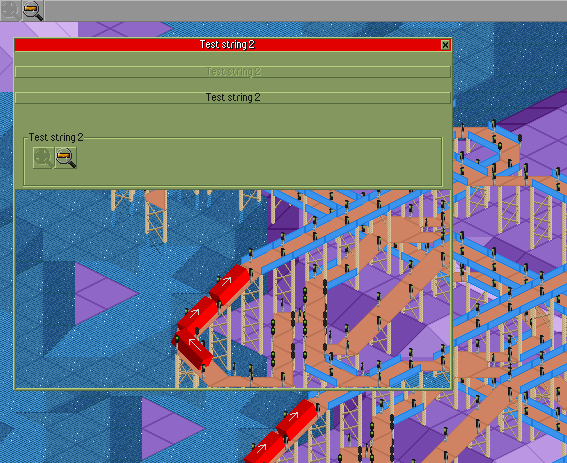 |
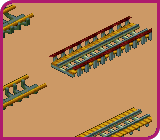 |
17 September 1996
Some of the earliest trial graphics created for RollerCoaster Tycoon - Wooden track and steel track. Little did Chris know that by the time the game was completed there would be 14 types of coaster track (and 8 more in the expansion pack).
|
|
19 September 1996
The first trial graphics for roller coaster cars. These are a good example of an early item that didn't change too much throughout the project, although you can compare these against some a few months later which are shown below.
|
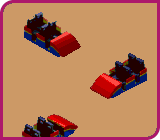 |
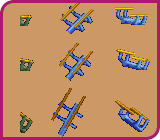 |
24 September 1996
The plan for roller coaster track was to have straight track at various angles, which could be plugged into each other to create hills and dips. However, this just wasn't good enough, and these early track graphics were abandoned in favour of smooth slope transitions.
|
|
30 September 1996
The first batch (of thousands) of different angles for the roller coaster cars. Depending on the type of track and inversions, each car can have up to 800 different frames of animation, plus a further 1600 frames for the passengers.
|
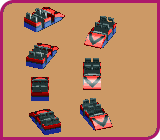 |
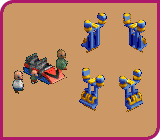 |
08 October 1996
Next to the roller coaster car you can see the first trial 'people' graphics. Also in view are the first incarnations of an inverted coaster car.
|
|
24 October 1996
Modelling the vertical loop took a long time and great deal of calculation, and this early mode shows how NOT to do it. To keep the model simple, Chris had hoped to use a fixed radius for the upper half, and a larger fixed radius for the approaches, but as you can see, it doesn't look right. Most real-life coaster loops have a constantly tightening radius towards the top of the loop (called a 'clothoid' loop), and eventually this is what was created for RollerCoaster Tycoon.
|
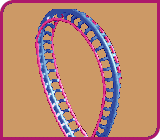 |
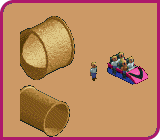 |
27 October 1996
Some strange 'tunnel' graphics. These look more like underground drainage pipes than anything else and they never made it to the final game. Next to them are some early blond-haired passengers in a roller coaster car.
|
|
17 February 1997
The first of many frames of animation for the generic 'guests' in the game start to take shape. Even just one character requires loads of single frames to cater for every frame of his movement and those had to be repeated for every direction they were walking too.
|
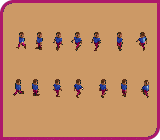 |
|
05 March 1997
Only a few months into the project, and this is the state of RollerCoaster Tycoon. Compared to many other games, this looks amazingly cohesive already. A variety of different roller coaster types are implemented, along with some of the control systems and scenery, but no sign of those little people yet.
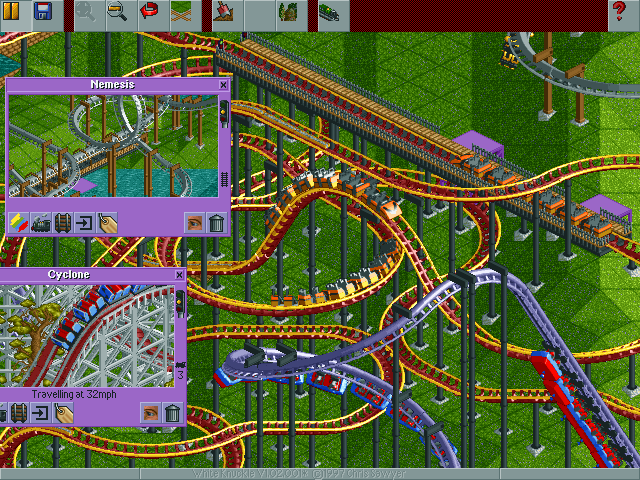 Size:130Kb |
|
15 March 1997
Some sculpted trees which didn't make it into the final game. Notice how the heads and tails of the birds vary in size as the artist worked on finding the best balance. Working on such a small scale, just a few pixels can make a lot of difference.
|
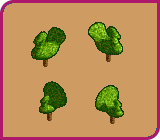 |
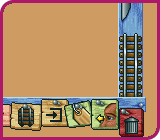 |
04 April 1997
Early experimentation with different styles of interface. This changed drastically before the final look was found. In fact, we'll be seeing how this idea for the interface style was developed further in a later example (in part 2 of this feature).
|
|
NEXT... In Part 2 of this series, we take a look at work during 1997. See the prototype wooden interface, the car and statues that never made it and the oddest item that looks something like a Panda (possibly). Click here to read part 2 now. Also, part 3 covers a ride that was never used, an entertainer that never made it to the park and the most unusual awards you'll see. Read part 3 now. Note: Please be aware that the contents of this article must not be copied/reproduced/published elsewhere without permission. ©1999, Chris Sawyer. All Rights Reserved©1999 Hasbro Interactive,Inc. |